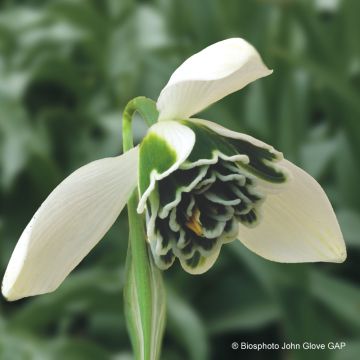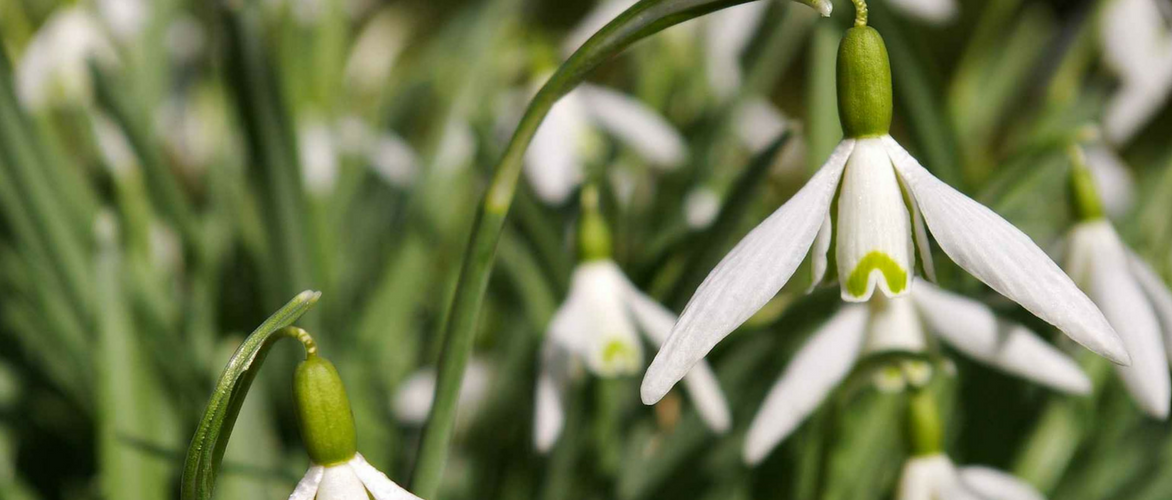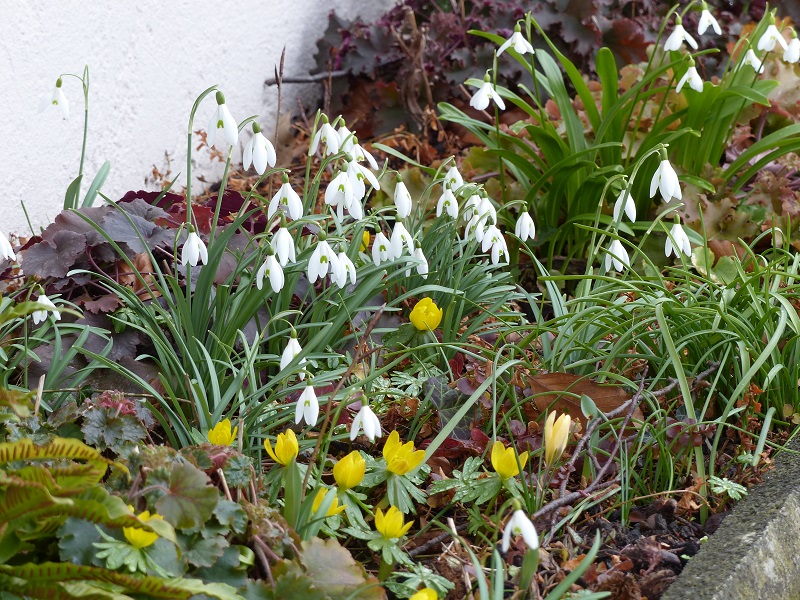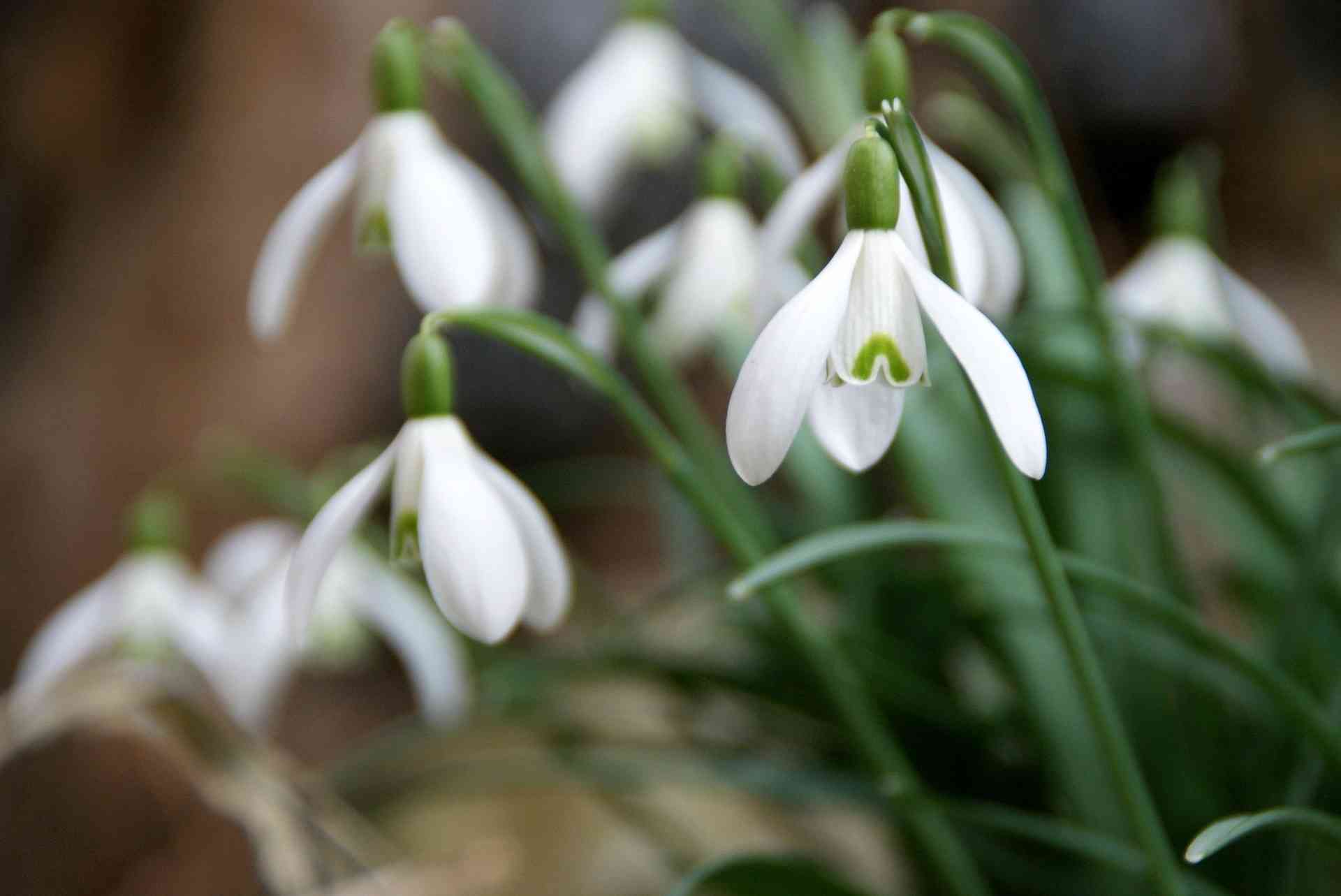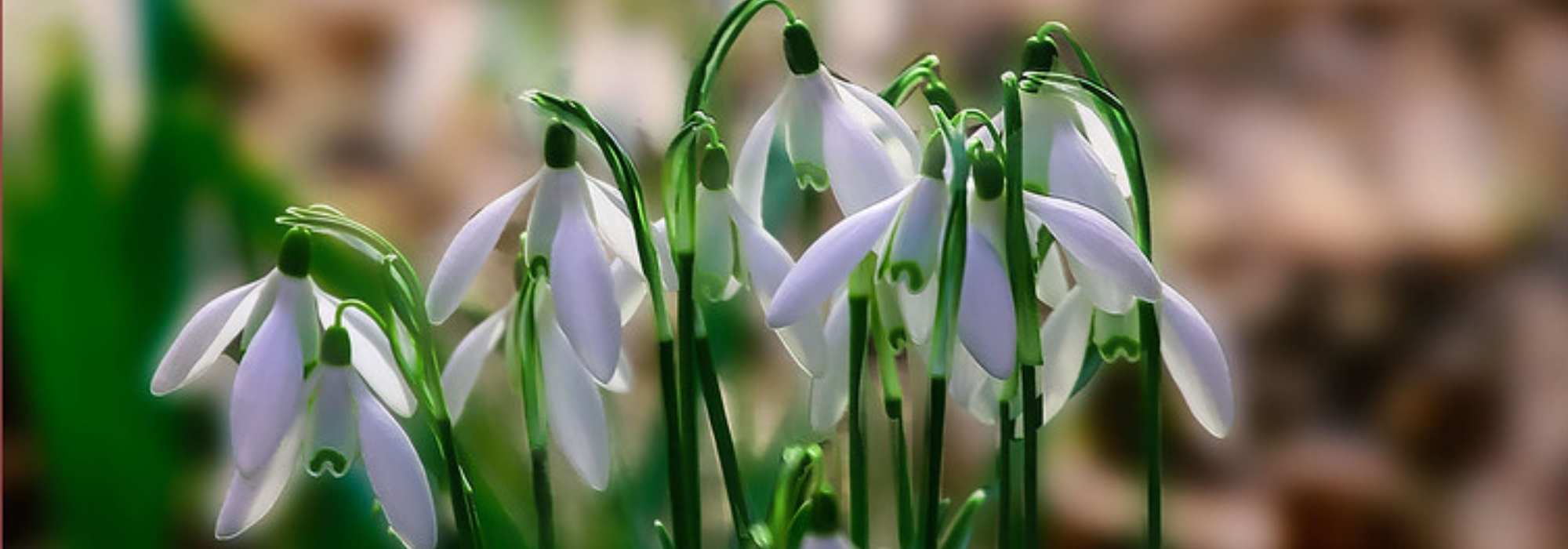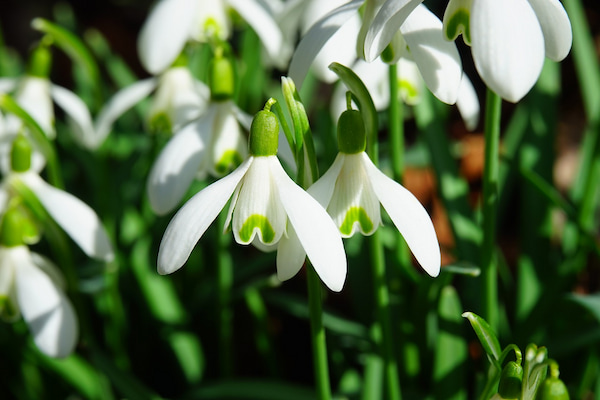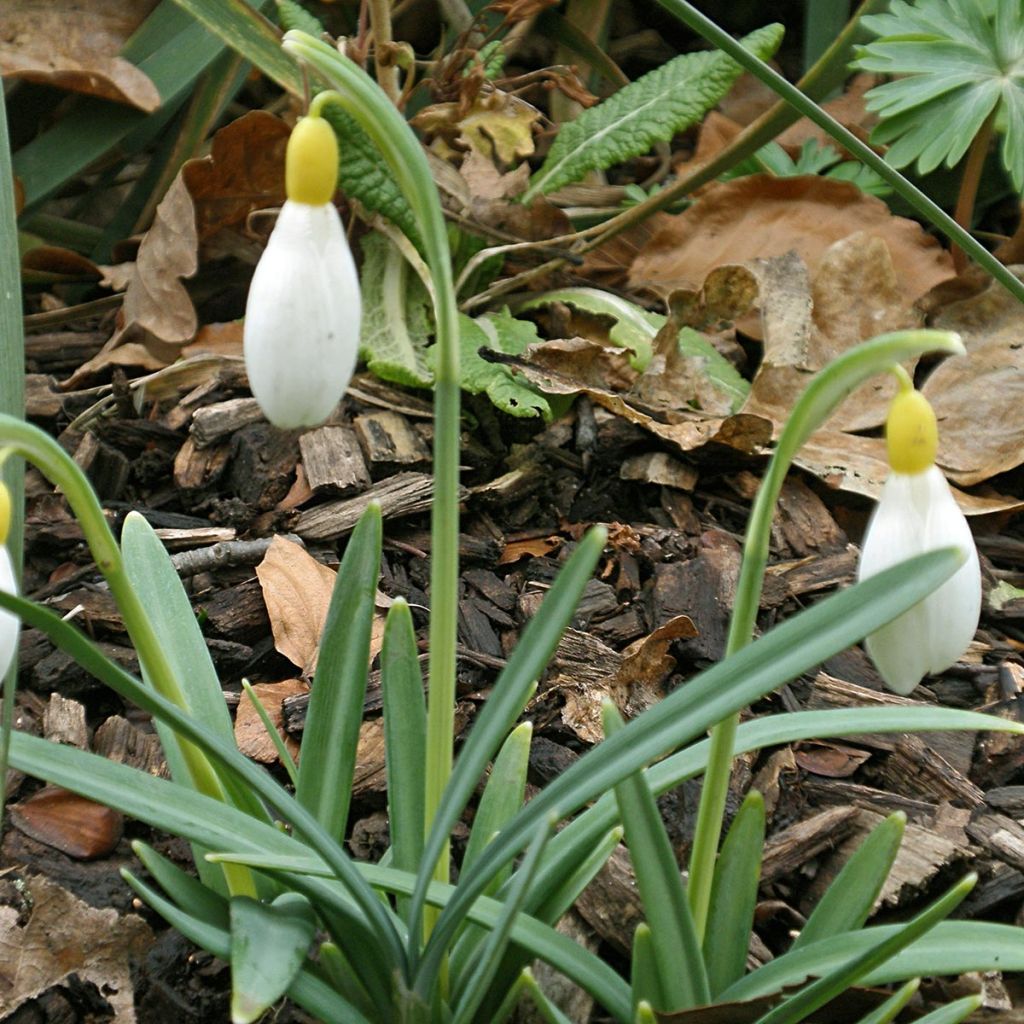

Perce-neige - Galanthus Primrose Warburg
Galanthus x nivalis Primrose Warburg
Galanthus x nivalis Primrose Warburg
Snowdrop 'Primrose Warburg'
Special offer!
Receive a €20 voucher for any order over €90 (excluding delivery costs, credit notes, and plastic-free options)!
1- Add your favorite plants to your cart.
2- Once you have reached €90, confirm your order (you can even choose the delivery date!).
3- As soon as your order is shipped, you will receive an email containing your voucher code, valid for 3 months (90 days).
Your voucher is unique and can only be used once, for any order with a minimum value of €20, excluding delivery costs.
Can be combined with other current offers, non-divisible and non-refundable.
Why not try an alternative variety in stock?
View all →This plant carries a 6 months recovery warranty
More information
We guarantee the quality of our plants for a full growing cycle, and will replace at our expense any plant that fails to recover under normal climatic and planting conditions.

Does this plant fit my garden?
Set up your Plantfit profile →
Description
Galanthus 'Primrose Warburg' is a snowdrop that stands out from the others in that yellow replaces green on its flower. The white flowers bear a yellow ovary at the base, just like the little spot that adorns the tip of the inner corolla. This colour on the bells often appears in the second year of cultivation. Slightly less vigorous than our classic snowdrop (G. nivalis), this hybrid is nevertheless considered one of the most beautiful in the 'yellow' category. It will eventually form pretty clumps that disappear with the first warm weather. It can also be forced in a pot for Christmas flowering. Plant it near the house to admire it up close.
Galanthus 'Primrose Warburg' is likely a hybrid between G. nivalis and G. plicatus. It was discovered in 1997 in the garden of the famous snowdrop collector Primrose Warburg at South Hayes, west London. It is an herbaceous perennial bulbous plant of the Amaryllidaceae family. It forms a pretty clump measuring 13 to 15cm (5 to 6in) in height, composed of ribbon-shaped leaves that are strongly sheathed at the base. They are fairly dark green, often tinged with yellow, partially upright and partially arched, and sometimes folded back. In February-March, depending on the climate, one to two stems are produced by each bulb. They each bear a 2cm (1in) wide flower, carried outward from the clump and inclined towards the ground. The flowers consist of a yellow ovary at the base, from which 3 long swollen sepals emerge, covering a small central white corolla adorned with a small U-shaped yellow spot (not a V-shaped spot like in G. nivalis). The foliage yellows, then disappears at the end of spring. Snowdrops produce seeds, as well as numerous bulblets that allow them to spread over time. The dispersion of seeds is mainly carried out by ants.
Snowdrops convey an incredible power, as evidenced by the numerous legends associated with them; don't we say that spring is synonymous with the renewal of life? It will get along well with Crocus chrysanthus, hepatica, Christmas roses, and scilla. It will thrive in a moist rock garden, along with creeping bugle and a small and easy-to-grow fern called Blechnum penna-marina. These plants will occupy the space left by the snowdrops once their foliage has dried up, without suffocating the bulbs. It is ideal for light woodland, preceding the flowering of hellebores and corydalis. In cool climates, it tolerates sunny exposures at the edge of a border. It also grows very well in pots.
Plant habit
Flowering
Foliage
Botanical data
Galanthus
x nivalis
Primrose Warburg
Amaryllidaceae (Liliaceae)
Snowdrop 'Primrose Warburg'
Cultivar or hybrid
Planting and care
Plant the snowdrop bulbs as soon as possible, from September to November. Plant them 8cm (3in) deep, spaced 5cm (2in) apart, grouping them in batches of at least 15 or 20. After that, the cultivation requires little care. We advise you to leave the clumps in place for several years. They will naturally proliferate.
Snowdrops appreciate contrasting climates and need a period of cold to flower. They adapt to almost all soils, as long as they are moist, well-drained, and rather fertile. These plants should not lack water during the growth period. In warm regions, it is advisable to plant them in a position that benefits from the morning sun but with shade in the afternoon. They tolerate direct sunlight very well in cool regions.
Planting period
Intended location
Care
Planting & care advice
This item has not been reviewed yet - be the first to leave a review about it.
Haven't found what you were looking for?
Hardiness is the lowest winter temperature a plant can endure without suffering serious damage or even dying. However, hardiness is affected by location (a sheltered area, such as a patio), protection (winter cover) and soil type (hardiness is improved by well-drained soil).

Photo Sharing Terms & Conditions
In order to encourage gardeners to interact and share their experiences, Promesse de fleurs offers various media enabling content to be uploaded onto its Site - in particular via the ‘Photo sharing’ module.
The User agrees to refrain from:
- Posting any content that is illegal, prejudicial, insulting, racist, inciteful to hatred, revisionist, contrary to public decency, that infringes on privacy or on the privacy rights of third parties, in particular the publicity rights of persons and goods, intellectual property rights, or the right to privacy.
- Submitting content on behalf of a third party;
- Impersonate the identity of a third party and/or publish any personal information about a third party;
In general, the User undertakes to refrain from any unethical behaviour.
All Content (in particular text, comments, files, images, photos, videos, creative works, etc.), which may be subject to property or intellectual property rights, image or other private rights, shall remain the property of the User, subject to the limited rights granted by the terms of the licence granted by Promesse de fleurs as stated below. Users are at liberty to publish or not to publish such Content on the Site, notably via the ‘Photo Sharing’ facility, and accept that this Content shall be made public and freely accessible, notably on the Internet.
Users further acknowledge, undertake to have ,and guarantee that they hold all necessary rights and permissions to publish such material on the Site, in particular with regard to the legislation in force pertaining to any privacy, property, intellectual property, image, or contractual rights, or rights of any other nature. By publishing such Content on the Site, Users acknowledge accepting full liability as publishers of the Content within the meaning of the law, and grant Promesse de fleurs, free of charge, an inclusive, worldwide licence for the said Content for the entire duration of its publication, including all reproduction, representation, up/downloading, displaying, performing, transmission, and storage rights.
Users also grant permission for their name to be linked to the Content and accept that this link may not always be made available.
By engaging in posting material, Users consent to their Content becoming automatically accessible on the Internet, in particular on other sites and/or blogs and/or web pages of the Promesse de fleurs site, including in particular social pages and the Promesse de fleurs catalogue.
Users may secure the removal of entrusted content free of charge by issuing a simple request via our contact form.
The flowering period indicated on our website applies to countries and regions located in USDA zone 8 (France, the United Kingdom, Ireland, the Netherlands, etc.)
It will vary according to where you live:
- In zones 9 to 10 (Italy, Spain, Greece, etc.), flowering will occur about 2 to 4 weeks earlier.
- In zones 6 to 7 (Germany, Poland, Slovenia, and lower mountainous regions), flowering will be delayed by 2 to 3 weeks.
- In zone 5 (Central Europe, Scandinavia), blooming will be delayed by 3 to 5 weeks.
In temperate climates, pruning of spring-flowering shrubs (forsythia, spireas, etc.) should be done just after flowering.
Pruning of summer-flowering shrubs (Indian Lilac, Perovskia, etc.) can be done in winter or spring.
In cold regions as well as with frost-sensitive plants, avoid pruning too early when severe frosts may still occur.
The planting period indicated on our website applies to countries and regions located in USDA zone 8 (France, United Kingdom, Ireland, Netherlands).
It will vary according to where you live:
- In Mediterranean zones (Marseille, Madrid, Milan, etc.), autumn and winter are the best planting periods.
- In continental zones (Strasbourg, Munich, Vienna, etc.), delay planting by 2 to 3 weeks in spring and bring it forward by 2 to 4 weeks in autumn.
- In mountainous regions (the Alps, Pyrenees, Carpathians, etc.), it is best to plant in late spring (May-June) or late summer (August-September).
The harvesting period indicated on our website applies to countries and regions in USDA zone 8 (France, England, Ireland, the Netherlands).
In colder areas (Scandinavia, Poland, Austria...) fruit and vegetable harvests are likely to be delayed by 3-4 weeks.
In warmer areas (Italy, Spain, Greece, etc.), harvesting will probably take place earlier, depending on weather conditions.
The sowing periods indicated on our website apply to countries and regions within USDA Zone 8 (France, UK, Ireland, Netherlands).
In colder areas (Scandinavia, Poland, Austria...), delay any outdoor sowing by 3-4 weeks, or sow under glass.
In warmer climes (Italy, Spain, Greece, etc.), bring outdoor sowing forward by a few weeks.






























